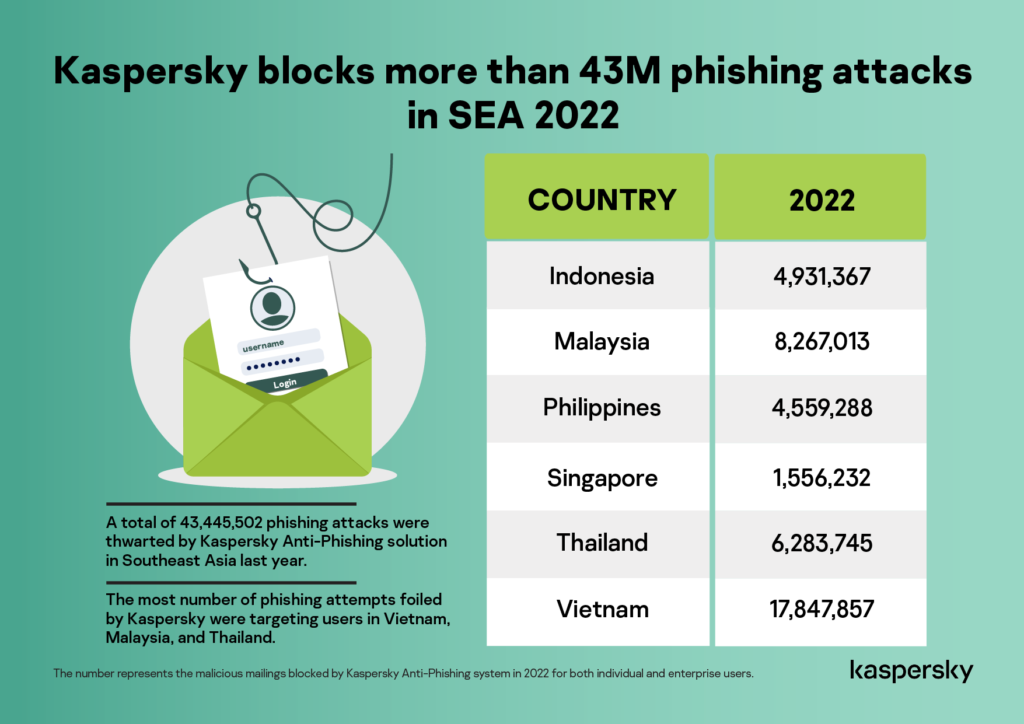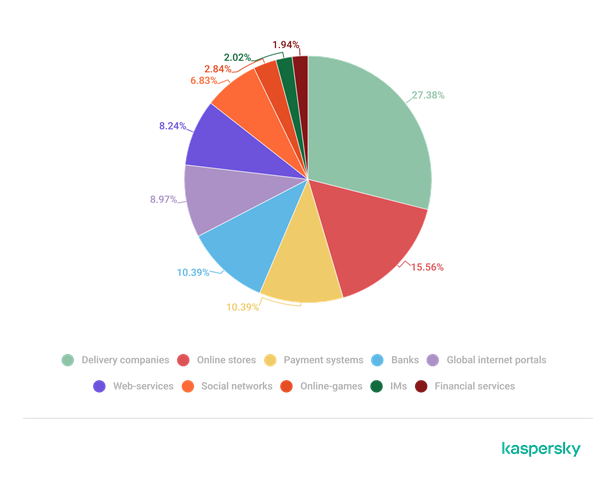
Data from global cybersecurity company Kaspersky shows that the email phishing attacks in Malaysia remains at an alarming rate with a total of 8,267,013 malicious mailings blocked by Kaspersky Anti-Phishing System in 2022.
According to Cybersecurity Malaysia, Malaysia reported 4,741 cyberthreats in 2022, and already recorded 456 fraud cases as of February 2023.
To raise the red flag further, a total loss of RM27 million as of February 2023 already recorded by The National Scam Response Centre (NSRC).
Kaspersky thwarted a total of 43,445,502 phishing attacks in the region with Vietnam having the most attacks at 17.85 million, followed by Malaysia in second position and Thailand at 6.28 million.
Globally, Kaspersky’s Anti-Phishing System prevented 507,851,735 attempts to follow a phishing link.

Kaspersky Asia Pacific managing director Adrian Hia said the phishing trend has risen not just in Malaysia but globally last year.
“This tactic remains a go-to infection technique for cybercriminals because phishing as a social engineering is really effective and easy to conduct.
“As the bad actors continue to be creative to hack our human minds through topics we care about, we need to continuously raise our awareness and really act on protecting our devices against cyberthreats,” he said.

According to Kaspersky, in 2022 pages impersonating delivery services had the highest percentage of clicks on phishing links blocked by its solutions at 27.38%, followed by online stores (15.56%) at second place, and payment systems (10.39%) and banks (10.39%) ranked third and fourth, respectively.
“Recently, we’ve seen an increase in targeted phishing attacks where scammers do not immediately move on to the phishing attack itself, but only after several introductory emails where there is active correspondence with the victim.
“Our experts predict that this trend is likely to continue. New tricks are also likely to emerge in the corporate sector in 2023, with attacks generating significant profits for attackers,” Hia added.
Here are some tips from Kaspersky to prevent phishing attack:
- Learn to recognize phishing attacks: make sure yourself familiar with what all types of phishing attacks look like. When you receive them, delete them immediately.
- Report phishing attacks: Once you have avoided a phishing attack, report the attack. This will allow companies to step up security and ensure they’re keeping customer accounts safe.
- Get antivirus and anti-phishing software: Most digital security companies have software that has anti-phishing components built-in. Many will allow you to filter out phishing messages as spam, so you don’t even see them. Make sure you are using an antivirus program that would also remove any virus on your computer and that would help heal any damage done if any bad actors had installed malware on your devices.







